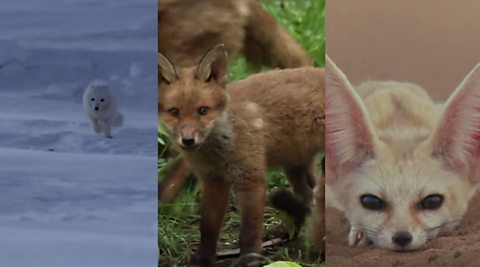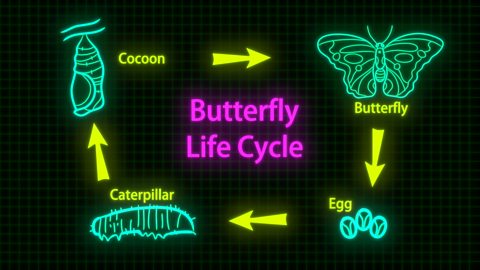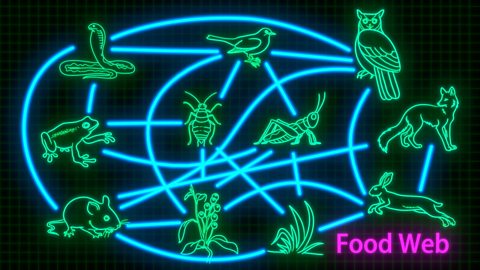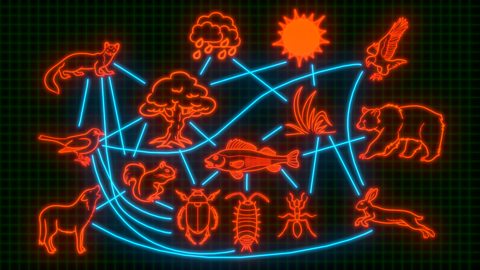Manfred, Azumi, Farooq, Gabriela, no wait that's Farooq ÔÇô or is that Callum. No, that's Callum. Hmm, this is difficult.
Well, it doesn't matter. They are fish. They're all fish. That's much more straightforward.
There is so much amazing and diverse life on planet Earth that looking at it all can be a big job. So when we study the natural world it can be very useful to group animals together. When we study nature we classify living things into different groups. We do this in order to try and make sense of all the incredible bio-diversity on our amazing planet.
As we're here already, let's start with fish.
I bet all of you could tell me that these animals are fish. You knew that already, right? But why? How did you know?
They all look different from each other, they have different shapes and colours, but we call them all fish.
What is it that these creatures have in common that separates them from other animals? They all have eyes, but then almost all animals have eyes, including you
So what makes a fish a fish?
The most obvious characteristic of fish is that they live in water ÔÇô they also breathe using gills.
Fish have scales and fins and they lay soft eggs.
Fish are cold-blooded, which means they don't generate their own body heat, but instead get it from the surrounding environment.
These are some of the main characteristics that make a fish a fish.
It's a simple idea but when we are trying to work out how all the plants and animals in the world fit together and how we have ended up with such an amazing diversity of life on Earth, looking at shared characteristics can tell us a lot.
What about these guys? Well, they're breathing air so we know straight away they're not fish. I bet you knew that without even thinking about it, and you might even know that these snakes, lizards and tortoise are all reptiles.
But what is it they have in common that helps us group them together? Some are big, some are small, some are even covered in spiky horns.
But what makes a reptile a reptile?The easiest characteristic to spot on a reptile is that they have scales, not fur. Other clues for spotting a reptile is that they have earholes instead of pointing out ears and also have dry skin. Like fish, reptiles are cold-blooded and usually lay eggs, although some reptiles can give birth to live young.
Reptiles have four legs or, like snakes, have no legs at all.
This animal lays eggs, but it's not a lizard. Although some scientists believe they may actually have descended from dinosaurs.
I know, but whether that theory is proven to be true or not, this is a bird. These are all birds. Big, small, plain, amazingly coloured and sometimes even dancing.
But it's not the ability to dance that makes a bird a bird. So what is it? Well, all birds have certain shared characteristics
Birds have feathers and wings. They have two legs. They have earholes instead of ears and they are warm-blooded, so they can generate their own body heat, like me or you and they lay eggs.
Frogs, toads and salamanders are similar to reptiles in some ways, and it can be easy to confuse them, but they are classified as amphibians.
Amphibians have moist skin, are cold-blooded and they can live on land or in water.
Amphibians lay lots of soft jelly-like eggs, like the frog spawn you may have seen in a pond in your back garden or local park.
Like all the other groups, mammals come in all different shapes and sizes, including human shape, but all mammals, including us, have shared characteristics.
Mammals have hair or fur, they need to breathe air and the mothers almost always give birth to live young, which they provide with milk to feed them and help them grow. Mammals are also warm-blooded.
Fish, reptiles, birds, amphibians and mammals.
These are just some of the groups we use to make sense of the natural world.
Over 200 years ago it was a Swedish scientist called Carl Linnaeus who first started the system of putting plants and animals into certain groups based on shared characteristics. His pioneering work to understand the natural world better is still the basis of how we classify plants and animals today and influenced the development of the theory of evolution.
So now we know a lot more about classification and why we do it, what do you think about this animal?
From the five groups we looked at, how would you classify it? Is it a fish, a reptile, a bird, an amphibian or a mammal?
At first glance you would say it's a fish, easy, it lives in the water after all, but looks can be deceptive and only by studying it more closely can we come to the true answer.
Dolphins actually breathe air and must come to the surface from time to time. The mothers also give birth to live young and provide them with milk. And although it may not look like it, they do actually have tiny hairs all over their skin. So what are dolphins?..
Yes, dolphins are mammals, just like an elephant or a mouse!..
I know. Amazing!
So we can see that by studying animals and grouping them together based on shared characteristics, we have a better understanding of how they all fit together, and we can discover things we might not have otherwise realised about the wonder of the natural world.
Video summary
How do we know a fish is a fish? This clip summarises how we classify animals into groups based on shared characteristics and the work of Carl Linnaeus.
Using stunning wildlife film and simple graphics, we take a journey through the animal kingdom discussing how we know a fish is a fish, even though they can all look different.
We move on to look at reptiles, amphibians, birds and mammals. But some animals, such as dolphins, donÔÇÖt always go into a group that we would expect.
This clip is from the Natural world of plants and wildlife series.
Teacher Notes
Pause the clip at the graphics to discuss the characteristics of the group shown.
Pupils could be asked to identify further animals that share those characteristics.
Discuss if there are any further classifications not covered in the clip.
Pupils could complete an activity on grouping other objects based on shared characteristics.
When you get to the section about the dolphin, pause and ask pupils to try and classify it before the answer is given at the end.
This clip will be relevant for teaching science at Key Stage 2 and Key Stage 3 in England, Wales and Northern Ireland or Second/Third Level in Scotland.
How animals have adapted. video
A look at a selection of animals, investigating how they have adapted to their environments.

The life cycles of different organisms. video
A look at the life cycles of a range of organisms including a mammal, an amphibian, an insect, a flowering plant, a bird and a human.

How plants and animals reproduce. video
An investigation into the many different ways animals and plants reproduce.

Food chains and food webs in animals. video
How energy is transferred through food chains and food webs via producers, primary and secondary consumers, predator, prey and decomposers.

The connections within ecosystems. video
An introduction to the concept of an ecosystem, exploring different types and looking at the connections between the living and non-living components of an ecosystem.

Human impact on the environment. video
A look at the impact of humans on ecosystems and the environment by focusing on the the penguins of Boulders Beach, Simons town, South Africa.
